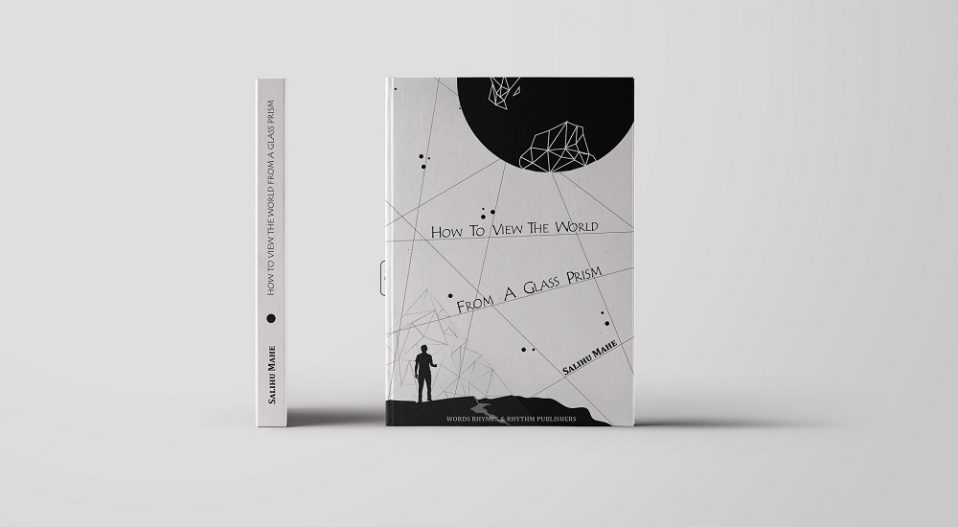TITLE: HOW TO VIEW THE WORLD FROM A GLASS PRISM AUTHOR: SALIHU MAHE GENRE: POETRY NO. OF PAGES: 54 YEAR OF PUBLICATION: 2020 ISBN: 978-978-984-518-7 PUBLISHER: AUTHORPEDIA PUBLISHERS REVIEWER: EUGENE YAKUBU
How to View the World from a Glass Prism is a collection of poetry that prepares readers on how to go through life with short, witty and misleadingly overzealous and petty titles but subtly ironic and on closer look, engaging. The poems are philosophical as well as evangelical, bringing overwhelming advice from the poet but allowing the reader to be cautious as well as to decide what to make of the never-ending ‘how-to’s.’
Mahe shows ingenuity with language. His wittiness does not just end at crafting elaborate metaphors but having his words echo in the reader’s mind long after reading. His lines— arranged in metrical verses, are like musical chords striking against each other and vibrating in the reader’s mind even though the meanings seems to be hidden.
The poems are surreal, like something in a dream, dissipating like mist and seducing the reader to step out of his head and go searching for meaning. Like every good work of art, How to View the World from a Glass Prism allows the reader to pick out diverse meanings in each line.
In the poems, the poet seems carefree and indifferent, like someone making an off-hand comment, but think deeper and you’ll see that in those four lines and eight words are snuggled elaborate meanings.
The poem How to Start Over is succinct and masterfully arranged it’d no doubt resonate in readers’ head.
A notable theme in Mahe’s poems is the ethereality and fleetingness of time. As read through most of his poems, time’s chariot will keep moving and every moment, every hour, must be beneficial and appreciated by man. In the poem This is How to Make Memories 1 & 11, the poet calls on the readers to “seize the moment” and to “Never let a second go by without/ Plucking a feather from the hands of time.” These images are of a world that never stops moving and of time that keeps ticking, hence we must learn to “create moments that glow in the dark/ like fireflies” and to “flirt with time.”

In Burial Made Easy and How to Live and Die, Mahe is pithy. His ability to fit in a whole idea in just lines remains till today a feature of good poetry and he has shown skill with this art. The wit and sarcasm is revealed in the poem How to Find a Wife. Worthy of mention is the reader comes fully into this collection, as geared by the titles of the poem, ready to learn ‘how-to’ or ‘how-not-to’ but Mahe ends up leaving the ball in the reader’s court, in a way saying: this is what I preach, but you must decide what to practice.
With simple but still urgent poems in this collection, I believe Mahe is a poet to contend with. He has the language and the creativity, however, his themes, his ideas, which he has watered down with emotions and abstractions— almost like the romanticist poets, needs to be as strong as his structure and form in order to be relevant in this contemporary world of art.




